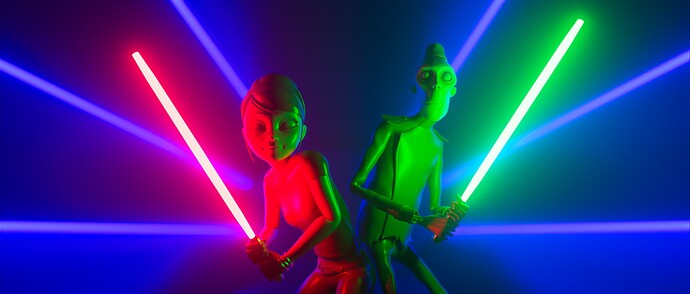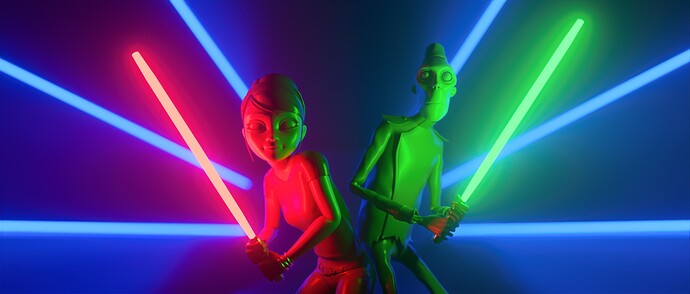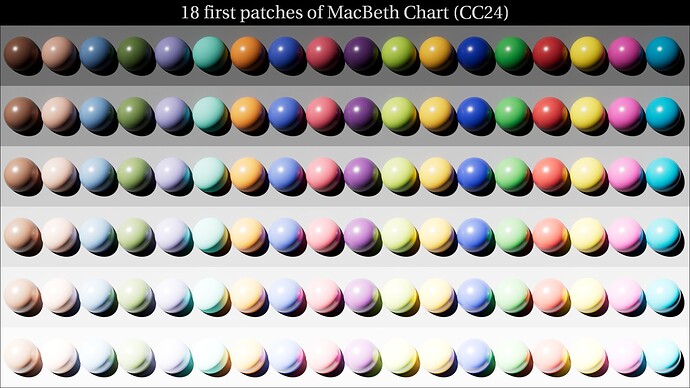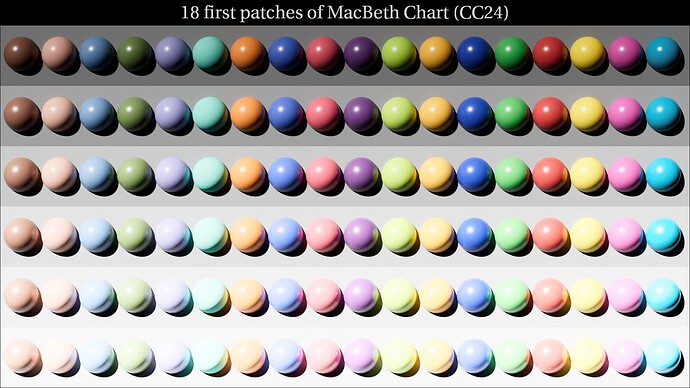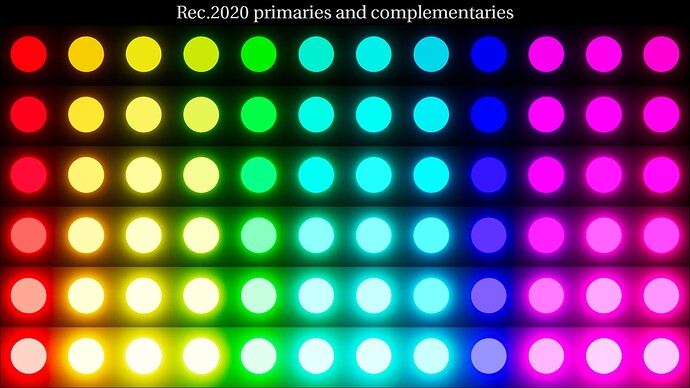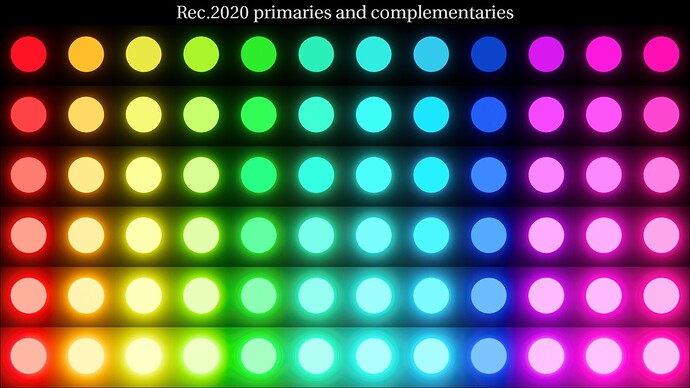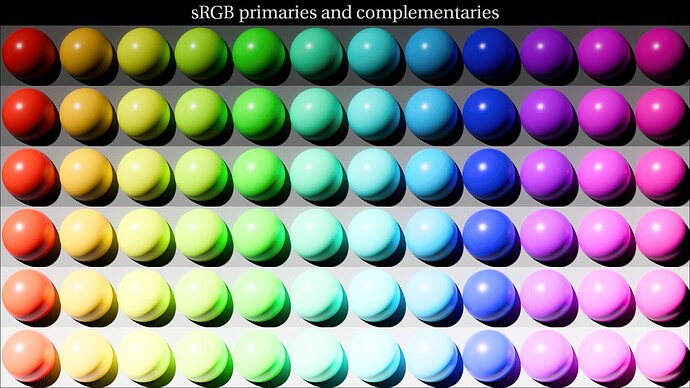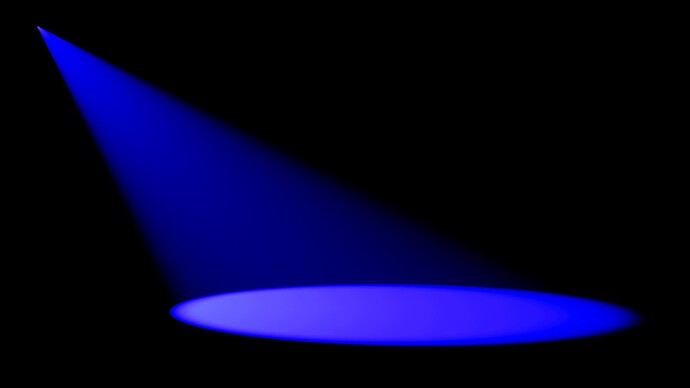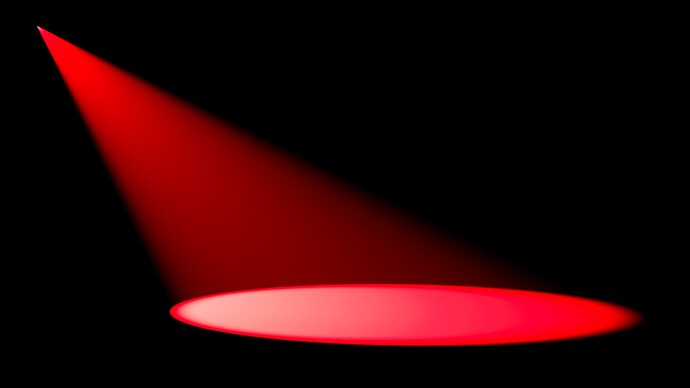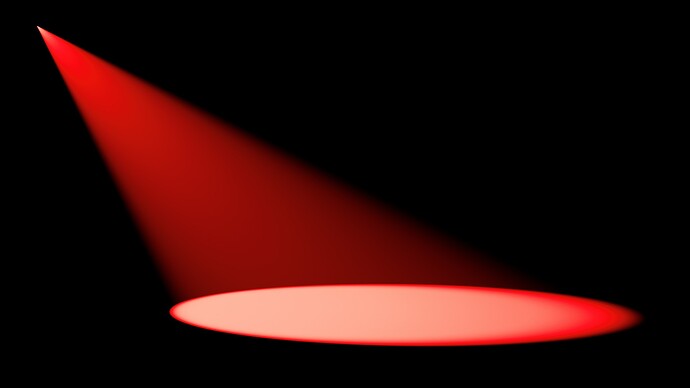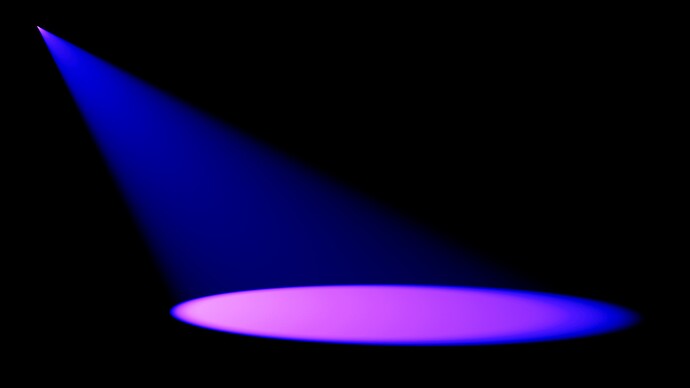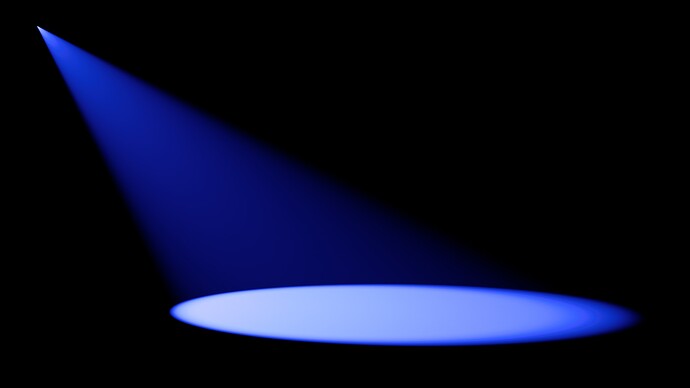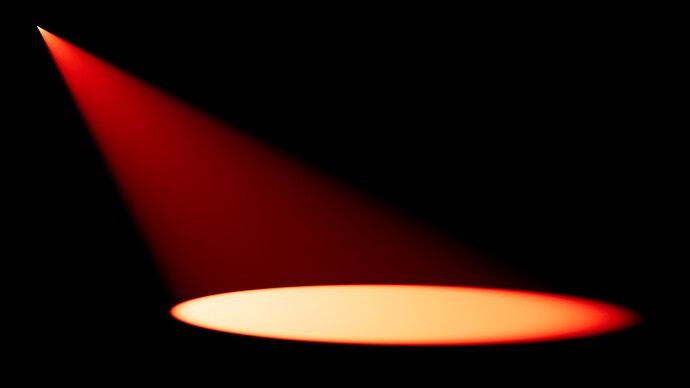Hello again,
I don’t mean to hijack this thread but I have been offered some very interesting information by @llamafilm.
I have done a few CG images for this group that has been uploaded to dropbox. I have tried to come with colored renders to illustrate some ODT limitations. And I have shared these images with @llamafilm who was interested to have a look. ![]()
In this first render, I have used ACEScg primaries for the light sabers. It is probably the most extreme case for a RGB render engine. We can see that the shirt of Mery (left character) is posterized. I tried to do the most brute-force render I could do (without any light-linking or funky stuff).
Here is the same render after Elliott’s work. I was quite pleased with the result to be honest and thought it was worth sharing. Only “issue” I have noticed is that the pixel values for the green light saber went from “170” to “7” in the green channel.
Here is a render of the first 18 patches of the CC24. Render is in ACEScg, displayed in sRGB (ACES).
It is interesting to notice that this particular render does not improve a lot with Elliott’s LMT. Probably because the albedo values were not very saturated.
Here is another render where I have put Rec.2020 primaries and complementaries in emission.
I kind of like how the blues behave in this one, even if the energy issue is similar to the one described in the light sabers example.
Here is another render with sRGB primaries used as albedo. The hue skew on the blue sphere is quite strong.
We can see here that path to white of the red sphere and blue sphere look more coherent, like if hue skews were gone.
Here is a blue ACEScg primary in a volumetric light.
Another nice improvement… ![]()
Here is a red ACEScg primary in a volumetric light.
Same behavior here.
Here is a blue sRGB primary in a volumetric light, with hue skews on the impact.
Hue skews are gone here.
And finally here is a red sRGB primary in a volumetric light, with the orange dorito.
Improved by Elliott’s LMT.
I asked Elliott about this process and here are his explanations :
I’ve been looking at these images on a Vizio OLED. This is great fun! It really showcases the benefits of HDR, more than what I usually see with live action content. Using the stock ACES HDR ODT (Rec2020 PQ 1000), the hue shift and posterization is significantly better than Rec709, but the problems are still there. I ran this through the “Colorfront Engine” tool in Transkoder which acts as an LMT. This helps a lot with Rec709, and a little with HDR. […] The Colorfront Engine was developed over many years by Bill Feightner, and it can be inserted right in the middle of an ACES pipeline as an LMT. It provides a few simple parameters to help craft a unique look, but here I just used the default settings. Right now this tool is available in Transkoder and On-Set Dailies software, and they are planning to release an OFX plugin for Resolve in the future.
I had a look at the website and I thought there was some interesting information that I’d copy-paste here :
Colorfront is an advanced color volume remapping tools using the Human Perceptual Model for multiple display mastering maintaining the original creative intent. […] The following questions should be carefully considered when choosing a color processing pipeline for a mastering/delivery workflow:
- Does it support the common master workflow?
- Does it handle both SDR to HDR, and HDR to SDR?
- Does it support camera original and graded sources?
- Is it based on LUTs created with creative grading tools?
- Do they break with images pushing the color boundaries?
- Does it support various input and output nit levels?
- Does it support different output color spaces with gamut constraints?
- Does it support various ambient surround conditions?
- Will SDR look the same as HDR? Is the look of the image maintained?
You guys certainly already know about this stuff but from a naive perspective, I thought these were proper questions. ![]()
Chris
